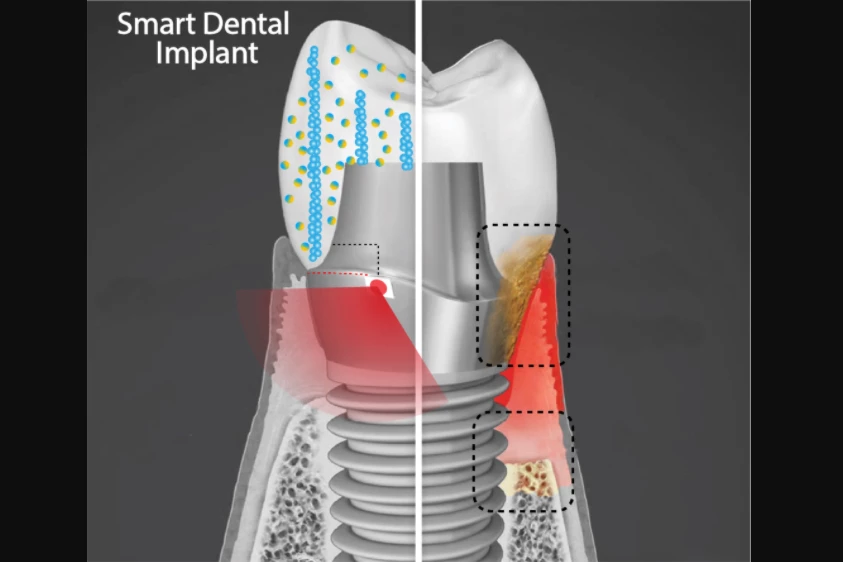While implanted artificial teeth do offer a longer-term alternative to dentures, they may need to be surgically replaced if chronic gum infections occur. Scientists are thus working on a better implant, that would generate electricity via mouth movements.
Currently being developed by Asst. Prof. Geelsu Hwang and colleagues at Pennsylvania State University, the implant consists of the natural-looking artificial tooth itself (the crown), inside of which is a steel body that incorporates a rectifier circuit, a battery, and a ring of near-infrared micro-LEDs around its exposed base. That base protrudes out the bottom of the crown, and is secured by a screw into the patient's jaw bone.
The crown is made of dental resin combined with nanoparticles of an inorganic compound called barium titanate. The latter is a piezoelectric material, meaning that it generates an electrical charge in response to mechanical stress.
It is hoped that movements such as chewing would be sufficient to generate a charge that could be stored in the battery. That battery would then periodically power up the micro-LEDs, so that they could irradiate the surrounding gum tissue. Studies have previously shown that such therapeutic light exposure, known as phototherapy, can help reduce inflammation and speed the healing of gum tissue damaged by infections.
Additionally, the team's lab tests have shown that the negative surface charge of the barium titanate particles repels the negatively charged cell walls of oral Streptococcus mutans bacteria. This means that the bacteria shouldn't cling to the crown and form the biofilms that we know as plaque – thus reducing the likelihood of infections occurring in the first place.
The university claims that the resin/nanoparticle composite has sustained its piezoelectric effect over the course of numerous tests. It also offers a mechanical strength similar to that of existing dental composites, plus the barium titanate nanoparticles don't leach out of it, and it does not harm healthy gum tissue.
"We hope to further develop the implant system and eventually see it commercialized so it can be used in the dental field," says Hwang.
The research is described in a paper recently published in the journal ACS Applied Materials & Interfaces, along with one published last year in Advanced Healthcare Materials.
Source: Penn State




